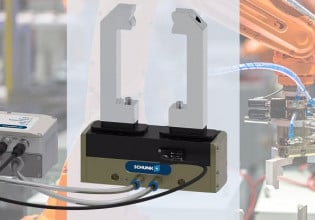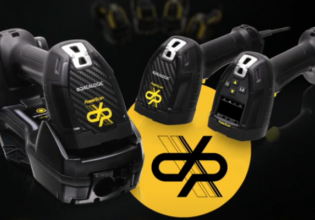Enhancing Durability and Reliability With Connectors for Harsh Environments
Choosing the right connector for industrial applications is no small feat. This article will discuss factors you must consider, including electrical, mechanical, and shape.
Connectors play a critical role in the field of electronics, and when choosing connectors for harsh environments commonly found in industrial applications, it is critical that all factors are considered. This article will explore the challenges that harsh environments present, what solutions currently exist, and where connector technology may go.
The Connector Conundrum
Every electronic and electrical system depends on connectors, whether for power delivery, communication, or control. Without connectors, it would be impossible to connect a circuit to external devices or power sources, which makes connectors just as fundamental as resistors and capacitors.
But like all electronic components, connectors come in many different shapes and sizes to meet the application requirements (Figure 1). For example, power connectors have higher current and voltage ratings, while data connectors have higher signal densities and support advanced features such as differential signaling.

Figure 1. Connectors are available in various sizes, shapes, and functions. Image used courtesy of Quarktwin
Choosing the right connector for an application is no small feat, as a wide range of factors need to be considered, including electrical properties, housing type, mechanical characteristics, and even shape. For example, rectangular connectors may be more useful in specific automotive applications (Figure 2).

Figure 2. Example of a rectangular connector housing (Amphenol ARC Series). Image used courtesy of Quarktwin.com
The Challenges of Harsh Environments
When designing equipment for industrial environments, engineers are faced with a tremendous number of challenges that typically don’t arise in more mundane applications such as commercial and domestic systems.

Figure 3. Reliable electrical connectors are needed in factory automation. Image used courtesy of Adobe
Unlike the average home or office, industrial environments can experience various environmental extremes, which can quickly degrade and damage components. These can include:
- Mechanical forces.
- Humidity.
- Temperature.
- Corrosives.
- Dust and dirt.
- Ultraviolet (UV) light.
- Explosives.
Let’s take a more detailed look at these harsh environmental factors.
Mechanical Forces
As industrial environments typically involve some degree of heavy machinery operating for extended periods, circuits can be subjected to extreme vibration and shock. One classic example is vibratory bowl feeders, which sort and feed items into production lines using strong vibrations generated by a large electromagnet. Any connector used in such an application would need to be able to withstand the intense vibration forces.
Humidity
Humidity is another major concern for engineers in industrial environments, as high levels of humidity can result in oxidation (rusting), while low humidity can introduce issues with dehydration and static build-up. Sources of high humidity can include boilers, steamers, chemical processes, and cleaning stations, while low-humidity atmospheres can be found in precision environments, all of which rely on electronic systems.
Temperature
Considering that industrial environments can include anything from deep freezers to furnaces (Figure 4) means that temperature extremes are the norm instead of the exception. However, such wide temperature variations are not just present in specific production steps but can result from uncontrolled environments (such as outdoor storage units). Such wide temperature swings can induce thermal stresses onto circuits, which, over time, can lead to cracking, poor electrical connections, and disconnects.

Figure 4. Industrial applications often create high-temperature environments. Image used courtesy of Adobe
Corrosives
While not as common as temperature and humidity extremes, industrial applications that deal with corrosive compounds (such as acids and salt spray) can easily create corrosive atmospheres. Such atmospheres can corrode and damage exposed materials over time, which often requires some form of specialized coating or hermetically sealed electronics. One common example is the PCB fabrication industry, which utilizes acids to etch copper.
Dust and Dirt
Any industrial environment that involves some kind of machining will inevitably generate dust and dirt. Both of these can easily settle on equipment, including circuits. If they get into connectors, it can result in connection issues that affect reliability. Such machining stations could include drilling, milling, sanding, and spraying.
Ultraviolet Light
Equipment used outdoors will likely be exposed to direct sunlight for extended periods, which can result in UV damage. In such cases, UV-resistant materials must be chosen. Otherwise, long-term damage can result in weakened materials that easily shatter.
Explosives
Explosive atmospheres are common in industrial applications where combustible materials are found, but while most think about gasoline, just about any powdered material can be explosive. For example, sugar powder formed in confectionary facilities can be highly explosive, requiring extreme care and precautions to eliminate ignition sources (Figure 5).

Figure 5. Production line in a confectionery factory. Image used courtesy of Adobe
All of the aforementioned factors need to come into the decision-making process when choosing a connector for industrial applications, as any one of these factors can do irreparable damage to the connector, the device, or the wider system. Making matters worse, connectors that are not suitably chosen can even lead to accidents involving workers, potentially resulting in injury or death.
Current Solutions and Their Challenges
Fortunately for engineers, numerous connector solutions exist for industrial applications, but for all the benefits they provide, each has some disadvantages.
Connectors with high IPxx ratings provide protection against water and chemical ingress, but it is important to consider pressure and whether a connector can withstand direct impact with water, or merely resist submersion. Furthermore, not all materials will be able to resist all corrosive compounds, so it is essential that the housing material is carefully considered.

Figure 6. Example of connector for explosive environments (Harting Han Q series). Image used courtesy of Quarktwin
Metal connectors provide engineers with a great degree of mechanical strength but can also help to maintain signal integrity if grounded. A metal enclosure around a connector prevents electromagnetic radiation leakage and resists sources of electromagnetic interference (EMI), making them highly ideal for applications involving sensors and motor systems.
Mechanical connectors with locking features can be great for resisting vibration and shock. Connectors that deploy mechanically and/or color-keyed designs eliminate the dangers of incorrectly inserting cables, which reduces the likelihood of damaging systems and simplifies installation.
Issues Remain
But for all the benefits that modern connector options present, the changing nature of technology is creates new challenges.
One such challenge is the growing use of IIoT technologies and sensors requires connectors supporting greater bandwidths and more contact positions. While this is perfectly possible for commercial applications, trying to create industrial-rated connectors capable of withstanding temperature extremes, vibration, and corrosive atmospheres, all while providing plenty of high-bandwidth I/O connectors, is immensely difficult.
Increasing the size of connectors can allow for more contacts to be integrated, but this results in an increased system size and weight, which can impede industrial applications. Using smaller contacts to increase connector density can help with bandwidth issues, but this introduces all kinds of challenges relating to power delivery and connector reliability.
Emerging Trends in the Field of Connectors
When it comes to the physical design of systems, the emerging trends of IIoT and AI are seeing a shift away from integrated designs to modular systems. As technology rapidly evolves, trying to replace systems every few years is an extraordinarily expensive feat, so, just like desktop PCs, some engineers are making hardware more configurable.
By doing this, engineers can leave the vast majority of a system's hardware in place while only replacing specific system components in favor of new components. This also helps make designs more future-proof, as future upgrades can be installed without changing the underlying hardware.
Such modularity is seeing the need for edge connectors that can support high bandwidths or pin headers that can provide mechanical stability to attached modules.
Another trend industrial systems see is the rise of Power over Ethernet (PoE). As industrial environments can easily see thousands of IIoT sensors installed across large spaces, powering each device via an Ethernet connection makes perfect sense as it eliminates the need for a secondary power cable. Simultaneously, using PoE also eliminates the need for wireless connections, which helps free up valuable radio channels.

Figure 7. Example of an IP67-rated Ethernet connector from TE Connectivity. Image used courtesy of Quarktwin
But, connectors used in PoE not only need to be able to support high bandwidths, but also the power requirements of connected devices. Because of the limitations imposed by Ethernet and RJ45, these connectors can often be limited in cable length and size, thus limiting their power delivery.
One solution that has arisen is the move away from RJ45 in favor of single-pair Ethernet connectors, which significantly reduces the size and weight of such cables. Furthermore, advances in these cables allow for simultaneous power delivery, allowing engineers to simplify cable installations.
Where Will Future Connectors Go?
Predicting where industrial cables will go is incredibly hard to judge, but by looking at the challenges and trends seen in industrial applications, we can make an educated guess.
To start, cable sizes must be reduced in size and weight to simplify cable installation and system costs. As future industrial systems will consist of thousands of devices all networked together, increasing the density of cables in cable bundles will be a priority.
Another major need for future cables will be simultaneous power and data connectivity. By combining both power and data into a single cable, engineers can reduce the complexity of designs, which also drastically simplifies maintenance.
Considering that networks will become critical, the need for simplified networks will also become essential. Any industrial system whose network is overly complicated will not only be difficult to maintain but could be prone to potential cyberattacks.
So, with all of these points considered, there is little doubt that single-pair network cables will dominate the future of industrial systems. Their small size, weight, and low-cost nature will allow for high cable densities while simplifying installation and reducing network complexity.

Figure 8. TE Connectivity D-subminiature connector designed for harsh environments. Image used courtesy of Quarktwin
However, in applications where power delivery isn’t required, optical systems may become highly valuable to industrial systems as they can provide massive bandwidth benefits while being incredibly small. However, considering that most industrial systems do not have large bandwidth requirements between stations (only internally), it is unlikely that industrial environments will deploy optical communication systems in the near future.
Industries such as agriculture and robotics will see a rise in demand for high-power connectors capable of supporting the high bandwidth needed in AI and automation. The same is true for any industrial application integrating AI whether it is locally or remotely. A locally executed AI system will require high-bandwidth connections between the main processor and its hardware, while a cloud-based AI service will require high-bandwidth network connections.
As such hardware will likely become modular, there will also be a need for edge connectors to support hardware upgrades. Such connectors will need to be chosen to have far more bandwidth than what is currently being used for the sake of future-proofing.
Selecting Connectors for Today...and Tomorrow
Undoubtedly, designing for industrial systems is extremely challenging due to the environmental extremes, the high degree of reliability and safety required, and the need for continual uptime. In fact, it could be said that common environments found in industrial applications go out of their way to damage connectors in every conceivable manner, whether through thermal stress, corrosive atmospheres, or oxidation.
While numerous connector solutions do exist, they are not without their drawbacks. It is often a struggle to provide a suitable compromise between power delivery and bandwidth capabilities. Going forward, it is likely that future connectors will be reduced in size to help engineers shrink their designs while also trying to introduce some degree of standardization so that hardware is more easily connected together.
Finally, future hardware systems will likely move towards a more modular design, allowing for future hardware upgrades that reduce the complexity of system installation and reduce system cost over the lifespan of an installation. Thus, future connectors will not only need to account for the system as it is, but how it may be in the future.






